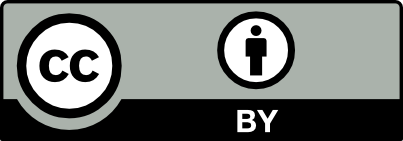Prioritization of lean tools using gap analysis and analytic network process [ANP]
DOI:
https://doi.org/10.18046/syt.v12i28.1746Keywords:
Lean Manufacturing, Analytic Network Process, Analytic Hierarchy Process, prioritized list of lean toolsAbstract
Decision making can be a complicated process, especially when we need to consider a large number of factors. In the case of companies implementing Lean Manufacturing, the vast variety of lean tools makes it harder to select the right tools for the right system at the right time. In this paper, a systematic approach is proposed to assist the decision making process in two steps. In the first step, a Gap Analysis is carried out to compare the current state of the system with a benchmark to identify the deficiency of performance in various categories. The second step employs the Analytic Network Process (ANP) to prioritize lean tools by evaluating the needs and urgency of improvements. We use ANP to prioritize a list of lean tools that need to be implemented urgently considering the current status of a manufacturing firm. A hypothetical case study demonstrates that the proposed decision making approach is capable in selecting lean tools that are applicable, suitable, and urgently needed according to user’s inputs.References
Abdullah, F. (2003). Lean manufacturing tools and techniques in the process industry with a focus on steel [Doctoral Dissertation]: University of Pittsburgh: PA
Gungor, A. (2006). Evaluation of connection types in design for disassembly (DFD) using analytic network process. Computer & Industrial Engineering, 50(1), 35-54
Gilbert, L. (2008). GAP analysis for information technology at Sacramento State: A self-study [on line]. Retrieved from http://www.csus.edu/irt/cio/strategicplanning/documents/GapAnalysisForInformationTechnology.pdf
Liker, J. & Convis, G. (2011). The Toyota way to lean leadership: Achieving and sustaining excellence through leadership development. New York, NY: McGraw-Hill
Marvel, J.H. & Standridge, C.R. (2009). A simulated-enhanced lean design process. Journal of Industrial Engineering and Management, 2(1), 90-113
Nicholas, J. (2010). Production for competitive advantage: A comprehensive guide to lean methodologies and management practices. New York, NY: Productivity
Ohno, T. (1997). Toyota production system: Beyond large-scale production. New York, NY: Productivity
Rivera, L. (2008). Justificación conceptual de un modelo de implementación de Lean Manufacturing. Heurística, 15, 91-106
Saaty, T. L. (1980). The analytic hierarchy process. New York, NY: Mcgraw-Hill
Saaty, T.L. (1996). Decision making for Leaders. Pittsburgh, PA: RWS
Womack, J.P., Jones D.T., & Roos, D. (1990). The machine that changed the world. New York, NY: Macmillan/Rawson
Womack, J.P. & Jones, D. (1996). Lean thinking: banish waste and create wealth in your corporation. New York, NY: Simon & Schuster
Womack, J. (2002). Lean thinking: Where have we been and where are we going? Manufacturing Engineering, 129(3), L2-L6
Gungor, A. (2006). Evaluation of connection types in design for disassembly (DFD) using analytic network process. Computer & Industrial Engineering, 50(1), 35-54
Gilbert, L. (2008). GAP analysis for information technology at Sacramento State: A self-study [on line]. Retrieved from http://www.csus.edu/irt/cio/strategicplanning/documents/GapAnalysisForInformationTechnology.pdf
Liker, J. & Convis, G. (2011). The Toyota way to lean leadership: Achieving and sustaining excellence through leadership development. New York, NY: McGraw-Hill
Marvel, J.H. & Standridge, C.R. (2009). A simulated-enhanced lean design process. Journal of Industrial Engineering and Management, 2(1), 90-113
Nicholas, J. (2010). Production for competitive advantage: A comprehensive guide to lean methodologies and management practices. New York, NY: Productivity
Ohno, T. (1997). Toyota production system: Beyond large-scale production. New York, NY: Productivity
Rivera, L. (2008). Justificación conceptual de un modelo de implementación de Lean Manufacturing. Heurística, 15, 91-106
Saaty, T. L. (1980). The analytic hierarchy process. New York, NY: Mcgraw-Hill
Saaty, T.L. (1996). Decision making for Leaders. Pittsburgh, PA: RWS
Womack, J.P., Jones D.T., & Roos, D. (1990). The machine that changed the world. New York, NY: Macmillan/Rawson
Womack, J.P. & Jones, D. (1996). Lean thinking: banish waste and create wealth in your corporation. New York, NY: Simon & Schuster
Womack, J. (2002). Lean thinking: Where have we been and where are we going? Manufacturing Engineering, 129(3), L2-L6
Downloads
Published
2014-03-30
Issue
Section
Original Research
License
This journal is licensed under the terms of the CC BY 4.0 licence (https://creativecommons.org/licenses/by/4.0/legalcode).


